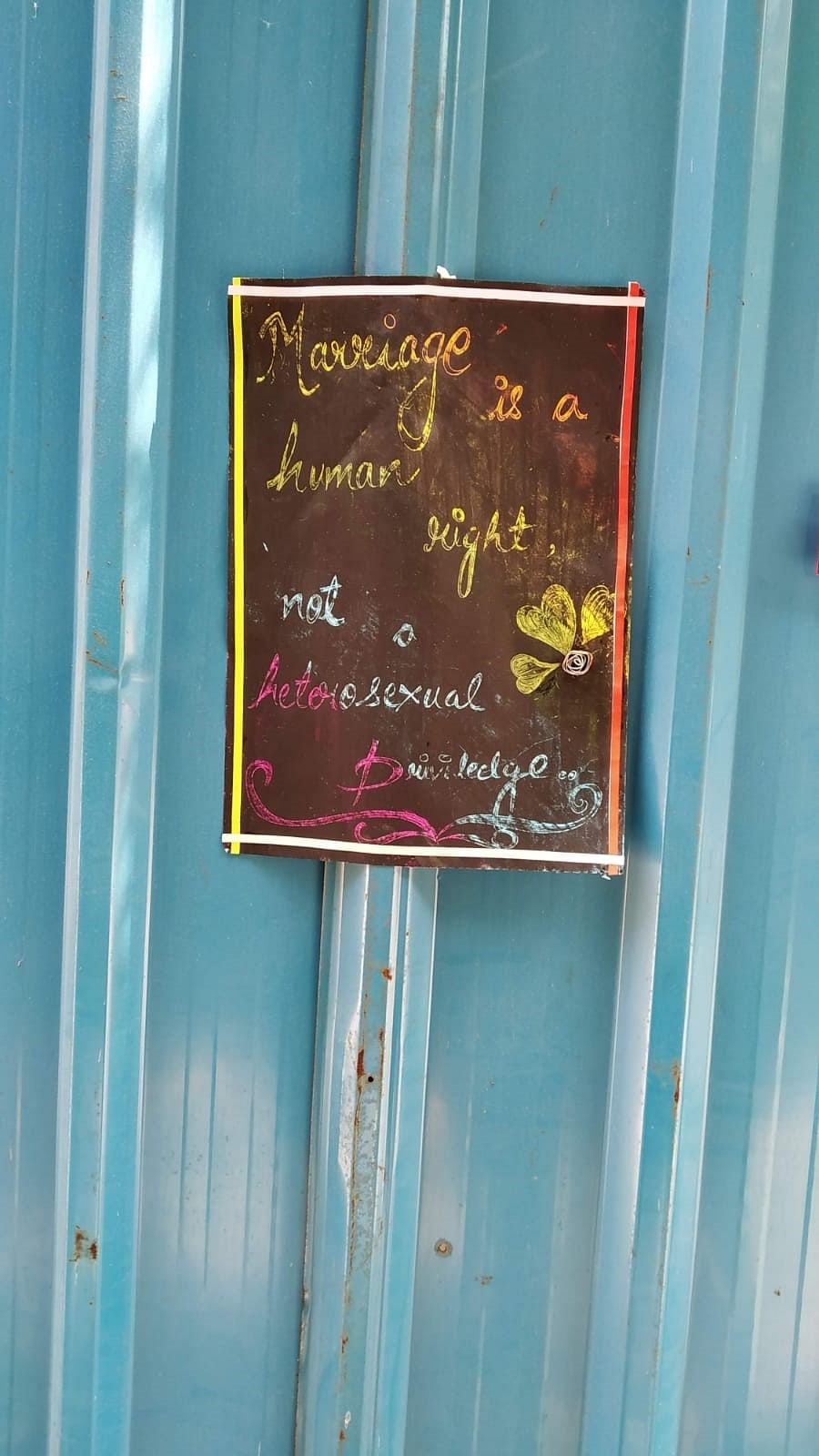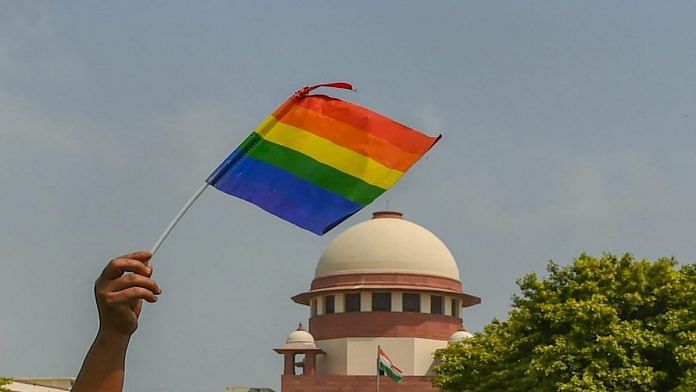Marriage is a human right, not a heterosexual privilege’. This is what a poster near the admin section of Delhi University’s Hindu College read, sometime during September 2019 in the foreground of a rapacious DU crowd celebrating LGBTQ dignity in a ‘Pride Parade’.
That appropriation of marriage as a human right was sidelined on 25 October when the government of India told the Delhi High Court that ‘marriage’ is a term associated with heterosexual couples and it is permissible only between a biological man and woman. Thereby, in government of India’s worldview, marriage, as of 25 October 2021, ended up becoming a heterosexual privilege and not a universal human right that some of us DU wallahs had come to believe.

Also read: Not woke on same-sex relationships, says Madras HC judge, wants ‘psycho-education’ session
‘I am what I am, take me as I am’
There were two more pride parades that we saw in DU’s North Campus back in the pre-Covid days when crowding for human rights was deemed healthy to secure an ever-progressive constitutional discourse. Everywhere one slogan remained common – ‘I am what I am’. ‘Take me as I am,’ the crowd would follow to complete the chorus, repeating what the former CJI Dipak Misra had first said when his Supreme Court bench had struck down a part of Section 377 of the IPC.
One wonders if the government of India took the former CJI’s words by heart or over the head.
There is no official count of LGBTQIA+ population in India. In 2012, the government of India in its submission to the Supreme Court had informed that there are 2.5 million gay individuals in India. A recent survey conducted by multinational research firm Ipsos suggests that 17 per cent of Indian people do not identify themselves as heterosexual. Why should these many Indians be excluded from their choice to marry? Simply because they do not identify with the government of India’s idea of what a marriage should be and between whom.
The way ahead is usually the way forward. However, as India awaits the next step forward more than three years after homosexuality was decriminalised, the government’s stance to establish LGBTQIA+ dignity has been that of a pause and worse an attempt to move backwards by seeking dismissals of the petitions asking for recognition of same-sex marriages under existing laws.
While the Citizenship Act, 1955, the law which characterises the eligibility of the ‘spouse’ of an Overseas Citizen of India cardholder to apply for an OCI card, does not identify gender identity of the either ‘person’, the government told the High Court that ‘spouse’ means husband and wife and marriage is a term associated with heterosexual couple.
Also read: Homosexuality not form of ‘expression’: Singapore top court disagrees with Indian SC judgment
Dabur ad withdrawal: Reflection of India’s fragile public sphere
While it is typically believed that the present-day manifestation of homosexuality or any gender identity beyond heteronormative identities (male or female) is mired by Western influences, India’s LGBTQIA+ communities also identify with the country’s festivities and celebrations. It may be the celebration of Shakti in Durga Puja or a marker of an Indian idea of love between spouses manifested within Karwa Chauth, which involves wives fasting for the long lives of their husbands.
Dabur, an ayurvedic and healthcare products major, took an unconventional marketing call for one of its skin-whitening products by depicting two women fasting on Karwa Chauth for each other’s ‘happiness’ and ‘long lives’ by using the hashtag ‘glow with pride’. The advertisement was later withdrawn by the company for ‘unintentionally hurting people’s sentiments’. The withdrawal was marked after Madhya Pradesh home minister Narottam Mishra warned Dabur of legal action if the advertisement was not withdrawn.
“Today, they are showing two women celebrating Karva Chauth. Tomorrow, they will come up with an advertisement that shows two men getting married. We object to it,” Mishra was quoted as saying by news agency ANI.
If the government’s appropriation of marriage as an apparent heterosexual privilege established it as a major resisting force against an evolving constitutional discourse for LGBTQIA+ rights in India, the withdrawal of Dabur advertisement exposed present-day India’s hyper-sensitive public sphere.
Two men can get married in at least 30 countries all over the world where same-sex unions are legal. While the current discourse on the questions of LGBTQIA+ dignity remains strongly resistant of legalisation of same-sex unions in India, the way ahead will be determined on the final hearing of the batch of petitions seeking recognition and registration of same-sex marriages in India on 30 November in the Delhi High Court.
Is the way ahead still the way forward?
Mukul Sharma is a student of Delhi School of Journalism, University of Delhi. Views are personal.




